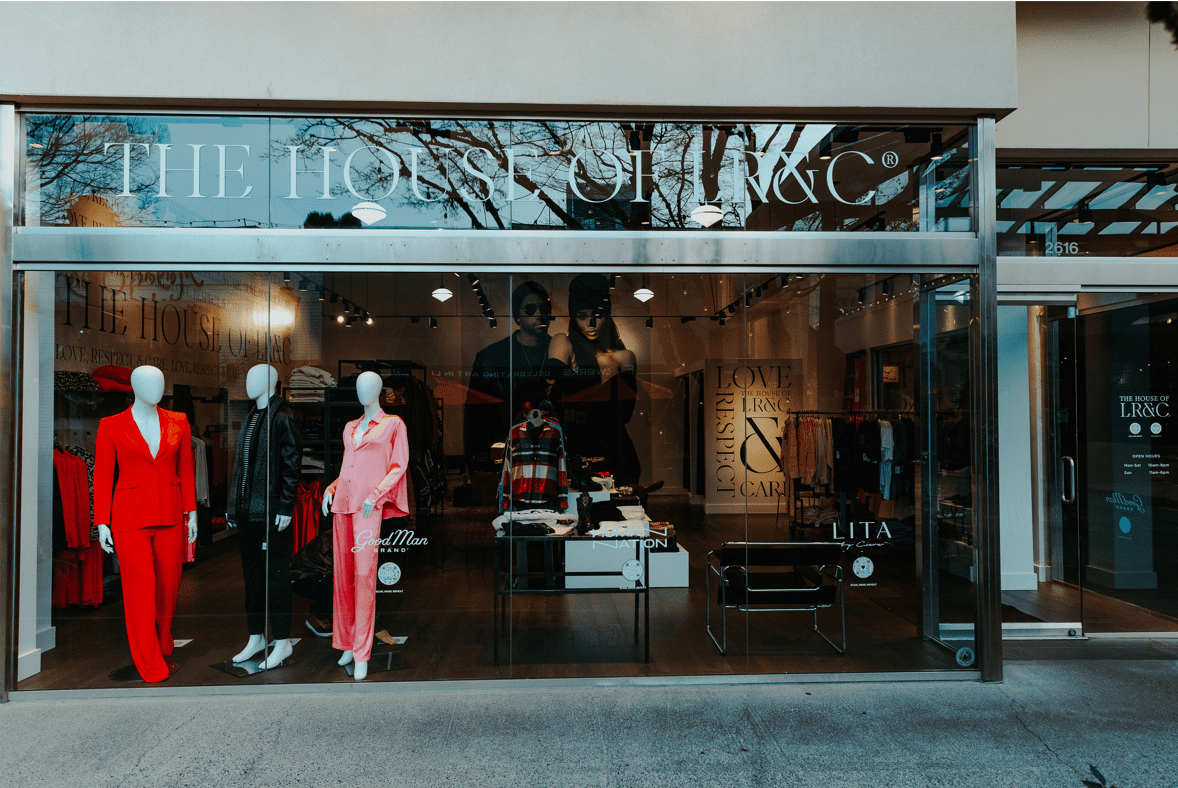Building The House of LR&C Apparel Brand Takes More Than Celebrity Backing

Experienced leadership is always valuable and having a few crises under your belt never hurts.
That’s the message from Christine Day, CEO of fashion brand The House of LR&C, the apparel company she co-founded in late 2020 with singer Ciara and NFL quarterback Russell Wilson. Having run the Asia-Pacific Group for Starbucks and then as CEO of Lululemon, Day has navigated a few market downturns and believes she’s got the right mix of strategies in place for a tough 2023.
“Maybe that’s just my role in life is to launch things during turbulent times. That experience helped me figure out what are the right strategies. ‘Where do I have to be careful?’, ‘How do I risk assess for this?’” she told PYMNTS in a recent interview.
On that score, she feels relatively calm about the uncertainties ahead in 2023 as Day said, “We’ve built a seasoned team, because if you’re going to build a sustainable fashion brand in today’s environment in retail, you need to have experienced experts, particularly in fabric technology and supply chain.”
A critical lesson learned over her storied career is the importance of payments choice, having been instrumental in launching the Starbucks Card back in the day, among other innovations.
“I’ve certainly seen in my career the value of letting the customers have choice about how they pay,” she said. “One of the things we saw with gift cards was it built tremendous loyalty when people had money on the gift card and on their apps. They would choose you when they had a choice between two because you’re going to spend the money that you’ve loaded.”
In 2023, she said, “As we’ve built The House of LR&C we already have and accept eight different payment types. We’ve implemented Klarna. Letting the customers buy now pay later, pay in small batches is an important part of the customer acquisition strategy is to give them that choice and remove the barriers to purchase.”
A Cost-Conscious Omnichannel Approach
Day is hyper-focused on high customer acquisition costs and ways to minimize that while attracting new fans to the young brand. From the start, The House of LR&C was direct to consumer (D2C) but also leveraged Day’s experience at Lululemon, bringing omnichannel and wholesale into the mix.
“Wholesale is actually a great customer acquisition strategy, it’s a way to convert your cash faster,” Day said. The brand’s pacts with Nordstrom, Revolve, Kohl’s, Amazon and Zappos are ways of expanding distribution to reach new customers who want different experiences.
“You have to be everywhere the consumer is,” she said. “The consumer leads a lot more in terms of what they want, whether it’s payment methods or how they enter a brand space or where they shop. We have to be a lot smarter about that omnichannel experience that the guest expects. And I don’t think we can get locked into one channel.”
That’s led to four open pop–up retail locations and using digital technology to make discoverability easier. For example, The House of LR&C is using flow codes — a more programmable and customizable form of QR code — to bring shoppers directly to custom landing pages on the site, depending on which of its three lines they want to engage with.
She said, “It’s a way of interacting and sharing the story of The House of LR&C that includes the option to pay for or purchase a whole outfit. We also use that technology with our affiliate partners. We can create commission programs or extra compensation for our partners if they hit store targets, etc.”
It’s working, expanding brand awareness while controlling customer acquisition costs, whether by leveraging the high customer loyalty at chains like Nordstrom’s, fashion marketplaces like Revolve, or more affordable names like Kohl’s.
2023 Outlook and the ‘Cautious Consumer’
Connected commerce is key in The House of LR&C’s eCommerce strategy with a search slant that brings those interested in specific lines — from The Good Man Brand to Lita by Ciara and Human Nation — directly to landing pages for those brands and encourages cross-shopping.
“We know 30% of our men’s purchases are done by the same woman’s profile for Lita,” Day said. “We use our men’s shoes and bring them into that, then port them over, and what we see is cross-shopping. By acquiring the customer information, we can then target them without paying for the higher customer acquisition costs.”
Entering 2023 after a strong 2022 performance gives Day confidence that her team can overcome whatever this year throws at them.
While she anticipates a “cautious consumer” in 2023 trading down, she added, “I think it will bifurcate. You’re going to have the people who are more squeezed economically who will shop deals. They’re going to be looking for that high value.” For companies themselves, she said, “There’s going to be a lot more focus on business model performance and demonstrating that you’re able to put a business model in the market that generates returns for shareholders.”
Here again, experience pays off. “We had a great holiday season,” she said. “We’re still a private company so we don’t disclose big numbers, but, The Good Man Brand, which is our oldest brand, was up 200%. We’re up 400%. Lita is just one year old. We drove about 10 points of growth in our DTC business [in 2022]. I would say it’s working pretty well.”
For all PYMNTS retail coverage, subscribe to the daily Retail Newsletter.
